WP_Post Object
(
[ID] => 4085
[post_author] => 14
[post_date] => 2020-06-30 12:10:59
[post_date_gmt] => 2020-06-30 18:10:59
[post_content] =>
Food is essential to survival. It is also essential to identity. Perhaps at no greater time than the present have we been aware of these facts. As news of the COVID-19 pandemic began circulating, Canadians hurried to grocery stores, stocking up for the upcoming crisis. By mid-March, experts had begun warning against hoarding. There is plenty of food in our supply chain, they said; do not “panic buy” lest we create shortages – and very real hardships – for the most vulnerable members of our communities.
There were, however, problems emerging. In mid-April, the national media became aware of a major COVID-19 outbreak at Cargill’s meat processing plant in High River, Alberta. Given that Cargill is one of Canada’s largest beef suppliers, there was tremendous pressure to remain open. Such scenarios were repeating themselves across the country and internationally. On farms, in factories, in transportation and in retail, people are working in dangerous conditions. Labour shortages, illness, stress and overtime have all combined to make working in the food industry incredibly harrowing – and in some cases, deeply tragic.
As many Indigenous Elders, scholars and community experts point out, Canada’s greatest food crisis started approximately 400 years ago. And, it is currently ongoing. This is, namely, the colonization of Indigenous foodways.
In the early days of the pandemic, panicked shoppers rendered grocery shelves bare. Here a shopper in Belgrade, Serbia leaving grocery store with an overflowing cart.
(Photo by iStock)
Meanwhile, potential supply problems loom. In some regions, food costs are going up, purportedly due to “higher operating costs, lack of availability of raw materials, and the current exchange rate,” as Atlantic Grocery Distributors put it. Local stores are scrambling to keep shelves stocked, creating frustrations for customers who only shop bi-weekly in attempts to practice social distancing. For their part, producers have been aggrieved because, although consumer demand is growing, they are having difficulty switching over product lines meant for wholesale toward the retail sector. In more remote communities, including several First Nations, concerns are increasing over reported declines in food shipments. Additionally, Food Banks Canada has launched a special appeal for $15 million because donations have been decreasing; there have also been fewer volunteers available.
As an historian of Canadian food, I have paid close attention to this developing situation. As my colleagues and I well know, it is during times of national crisis when food concerns move to the forefront of national debate. Since March 2020, Canadian food historians have used new publications and websites to share their knowledge about how Canada has coped during past food crises. We have also contributed through teaching. At the University of Regina, I am currently supervising graduate work in food history, including a master’s thesis by Brandi Adams on the history of sugar rationing during the Second World War. Between January and April 2020, I also taught an undergraduate course about the history of Canadian food.
It should also be noted that at no time in Canada’s past has there been a golden age of Canadian food. Rather, food insecurity – or difficulty in accessing food – has been a major problem in northern North America since at least the 1600s.story of Canadian food.
This course, called “Eating Canadian? A History of Food in Canada,” covers many topics, including the perennial question: What is Canadian food? Since March 2020, however, it is clear that my students and I must also ask another question, which is: How have Canadians distributed food during national crises? Fortunately, this is a question that many scholars have previously explored. As my students now know, there have been many crises affecting the history of Canadian food. Here, I will focus on three. However, it should also be noted that at no time in Canada’s past has there been a golden age of Canadian food. Rather, food insecurity – or difficulty in accessing food – has been a major problem in northern North America since at least the 1600s.
As many Indigenous Elders, scholars and community experts point out, Canada’s greatest food crisis started approximately 400 years ago. And, it is currently ongoing. This is, namely, the colonization of Indigenous foodways. Since time immemorial, Indigenous peoples have tended the environment in ways that have enabled sustainable food production, distribution and consumption. However, when Europeans began arriving, they brought their foods with them. By Confederation in 1867, the two so-called founding nations of English and French Canada were actively transposing their preferences for beef, pork, sugar and wheat upon the northern North American landscape.
As Canadian settlement increased, a battery of measures meant that Indigenous peoples began having tremendous difficulty accessing their own food. Particularly harmful have been reserves, the pass system, residential schools, private property laws, forced re-settlement, and such related events as species extinction (including wild bison) and habitat loss. For these reasons, Indigenous communities often experience food insecurity, even in supposedly normal, non-pandemic times. And unfortunately, when times are not normal, many Indigenous peoples’ food insecurity becomes acute.

Canadian author and geographer Lenore Newman suggests that Canadian food is that which grows wild in Canada, and which Canadians particularly enjoy, including salmon, fiddleheads, berries, and maple syrup. Donica Belisle suggests Canadian food is colonial food.
When people ask me the question – “What is Canadian food?” – my answer is that Canadian food is colonial food. Other scholars have different answers to this question; Canadian author and geographer Lenore Newman, for example, suggests that Canadian food is that which grows wild in Canada, and which Canadians particularly enjoy, including salmon, fiddleheads, maple syrup and berries. These foods are also present in Indigenous cuisines. But given that Canada is a colonial enterprise, one that has built its own food system upon already-existing food systems, it is important to recognize that Canadian food is colonial food. Moreover, so-called iconic Canadian foods such as Nanaimo Bars, poutine and butter tarts all derive from European foodways. One can certainly identify Canadian cuisine if one wishes; however, one must also acknowledge that this cuisine has a violent history, one that has marginalized Indigenous peoples, even as it has advantaged settlers.
As we grapple, again, with problems in the food supply, it is helpful to reflect on past crises. Lessons from both the World Wars offer insights into how our federal government, today, might move forward.

Donica Belisle is currently is currently writing a book on the history of Canadian sugar.
Other, more time-limited crises in Canadian food history have also occurred. Of particular note are the First and Second World Wars. During these events, the Canadian state went to great lengths to reduce Canadians’ consumption of certain foodstuffs, and to then send such foodstuffs to Great Britain. During the First World War, Britain called upon its Empire to increase their shipments of beef, pork, butter, sugar and flour. These foods were needed not only for civilians, but for the British military. In 1916, Canada stepped up production of these goods; by the end of the war, it had tripled its exports to the Mother Country. Meanwhile, on the home front, Canada introduced 28 Orders-in-Council that regulated meat, dairy, sugar and wheat consumption. At no time did Canada introduce rationing during the war; instead, through propaganda, as well as threats of fines and jail sentences, it urged civilian compliance.
Things were different during the Second World War. Having witnessed skyrocketing inflation between 1917 and 1921, in 1939 the federal state created the Wartime Prices and Trade Board (WPTB). Designed to curb inflation, reduce shortages and secure supplies for overseas, the WPTB was an unprecedented form of market control. In 1941, the WPTB introduced comprehensive price, rent and wage controls. The next year, it introduced rationing. Each Canadian household was issued a ration booklet that they used to purchase meat, sugar, butter, preserves, tea and coffee. Not until 1947, when the last of the rationing restrictions were lifted, did Canadians return to peacetime conditions. Even then, people protested. Almost as soon as restrictions were lifted, prices rose. In response, many argued that Canada should restore price ceilings. Only in this way could it guarantee nutritious food for all.
Even more importantly, we must today also recognize that even if Canada solves its food problems related to COVID-19, many in this country will continue to experience food insecurity.
As we grapple, again, with problems in the food supply, it is helpful to reflect on past crises. Lessons from both the World Wars offer insights into how our federal government, today, might move forward. Should shortages deepen, we might expect the state to introduce new measures that resemble the cautious steps taken during the 1910s. However, should both prices and availability became severe, we might expect stronger measures, ones more in accordance with those introduced during the 1940s. Through both price regulation and rationing, Canada’s federal government was able to adequately protect Canada’s food supply. In fact, price control and rationing during the Second World War actually improved Canadians’ diets. While price restrictions kept food prices at affordable levels, rationing ensured that there was usually enough food available for all but the most disadvantaged.
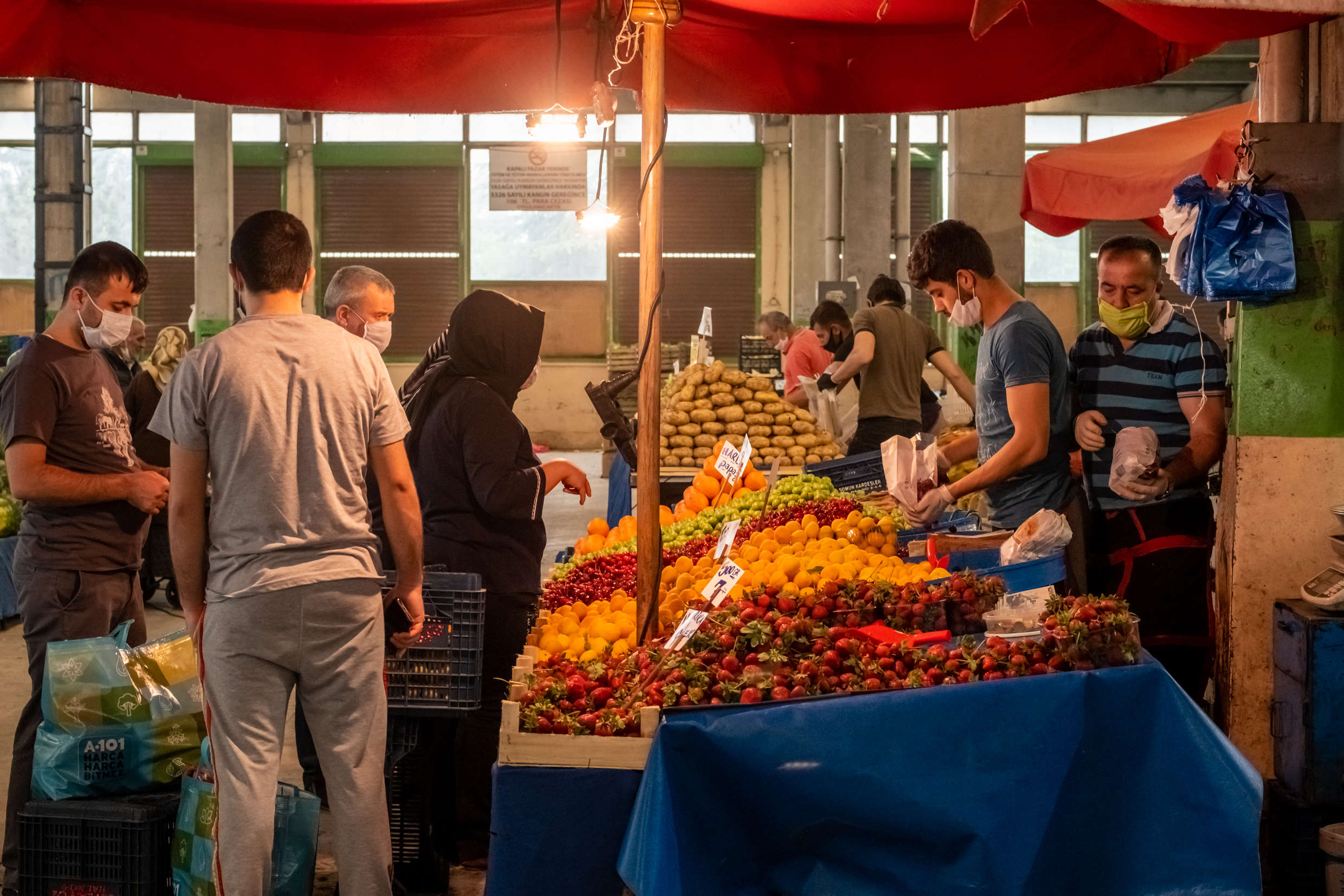
People with COVID-19 masks gather at a traditional Turkish grocery bazaar in Eskisehir, Turkey. (Photo by iStock)
That being said, we must also remember that the crisis we face today differs in certain ways from the past. Rather than needing to regulate Canadian food consumption to fight an overseas war, we are now needing to fix current problems in our food supply.
Even more importantly, we must today also recognize that even if Canada solves its food problems related to COVID-19, many in this country will continue to experience food insecurity. Thus, even as we turn to past crises for insights into current times, so must we also remember that there are ongoing food shortages in Canada, unrelated to the pandemic, that also require urgent attention.
[post_title] => Food in a time of crisis
[post_excerpt] => The ramifications of the COVID-19 pandemic on the world’s food supply could be disastrous. Hoarding, international trade disruptions, shortages of farm workers and processing plant closures, among other issues, threaten to push global food security to the tipping point. Associate professor of history Donica Belisle assesses the Canadian food security situation and puts today’s challenges in an historical context.
[post_status] => publish
[comment_status] => open
[ping_status] => open
[post_password] =>
[post_name] => food-in-a-time-of-crisis
[to_ping] =>
[pinged] =>
[post_modified] => 2022-11-16 14:25:50
[post_modified_gmt] => 2022-11-16 20:25:50
[post_content_filtered] =>
[post_parent] => 0
[guid] => https://www.degreesmagazine.ca/?p=4085
[menu_order] => 0
[post_type] => post
[post_mime_type] =>
[comment_count] => 0
[filter] => raw
)
WP_Post Object
(
[ID] => 4047
[post_author] => 14
[post_date] => 2020-07-02 11:26:22
[post_date_gmt] => 2020-07-02 17:26:22
[post_content] =>
If one is inclined to look, there’s some alarming science regarding climate change out there. Average temperatures in Western Canada are rising at two to three times the rate of the rest of the world; there is a clear trend of 50 years of warmer-than-normal months in Regina; pests and invasive species have been detected in regions where they have never been seen before; there are more frost-free days in Western Canada; and, our Winters offer more rain and less snow.
With scientific evidence for climate change mounting and climate protests grabbing headlines around the world, University of Regina faculty members Sarah Abbott, Britt Hall and Sean Tucker knew the time was right to reach out and provide members of the public with access to reliable information about climate based on cross-disciplinary research and Indigenous ways of knowing. The Academics for Climate Community Lecture Series was born.
The result is that both land and ocean temperatures have been increasing since 1976, with the devastating consequences we see regularly in the news.
Abbott, an associate professor in the Department of Film who taught the first course on climate change last semester in the Faculty of Media, Art, and Performance, was encouraged when a list of possible presenters with expertise in different climate issues, including Indigenous perspectives, quickly emerged.
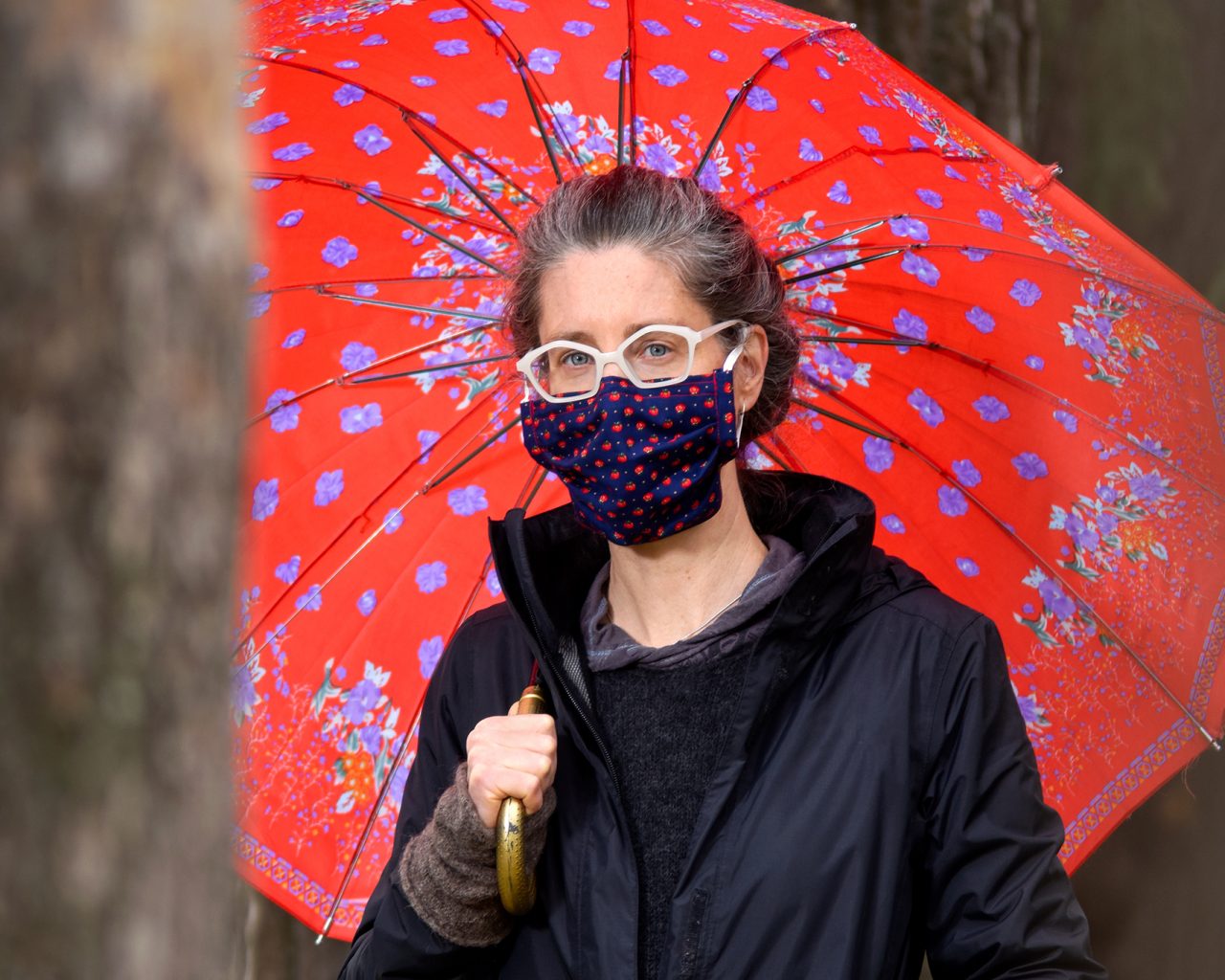
Sarah Abbott, an associate professor in the Department of Film. (Photo by Trevor Hopkin)
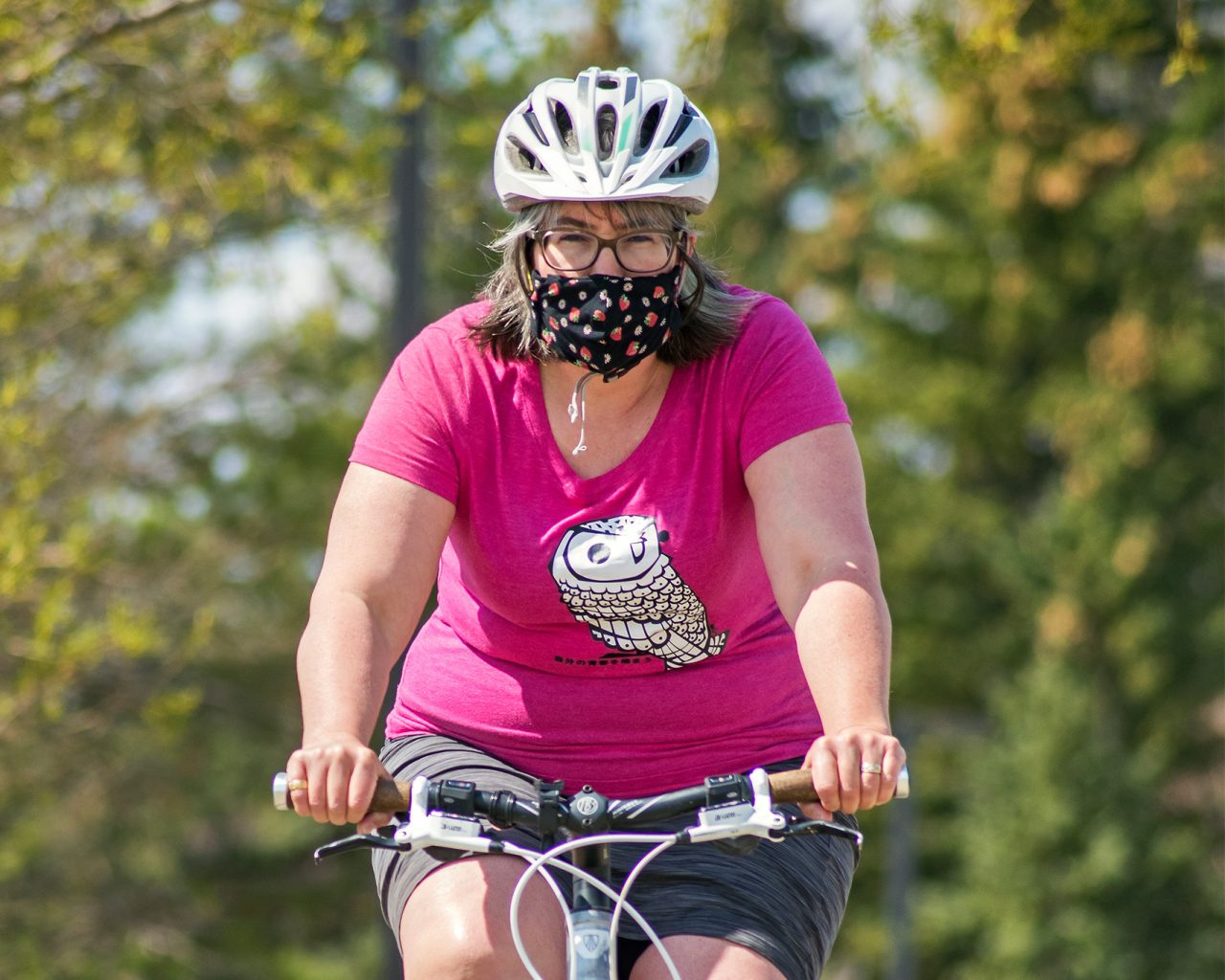
Britt Hall, a professor in the Department of Biology. (Photo by Trevor Hopkin)
Hall, a professor in the Department of Biology, adds that the three knew right from the start that the lectures had to be compelling without being confrontational. To keep audience interest piqued, plenty of informative visuals would be necessary, as well as engaging question and answer sessions. One of the goals of the series, she says, was providing information without political bias and avoiding the polarization that affects so much of the discussion on climate change in the public sphere.
Tucker, an associate professor of Business Administration, points out that the effort soon involved many different areas of the University, as colleagues stepped up to support the series with funding for promotion and to provide technical support.
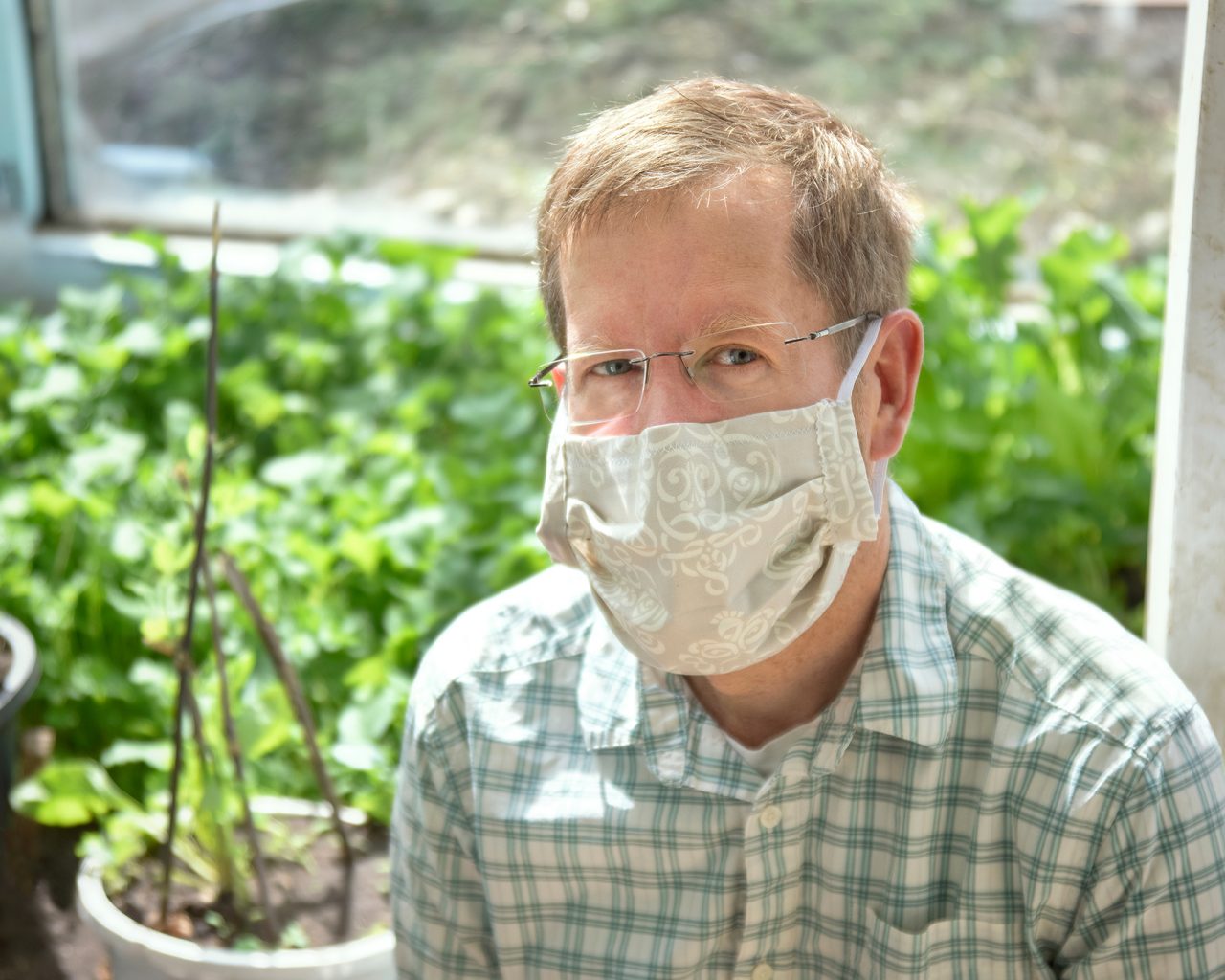
Sean Tucker, an associate professor of Business Administration. (Photo by Trevor Hopkin)
Hall kicked off the series in January 2020 with her presentation called, "The Consensus is in: Evidence Supporting Human-Induced Climate Change." That first event was held at Regina’s Bushwakker Brewpub as part of the monthly Science Pub Series hosted by the Faculty of Science. The rest of the lectures were held at the University of Regina’s College Avenue Campus.
The result is that both land and ocean temperatures have been increasing since 1976, with the devastating consequences we see regularly in the news.
In front of a full house, Hall shared basic information on how the Earth’s atmosphere works, followed by evidence supporting the consensus among scientists that the climate is changing due to increasing concentrations of the greenhouse gases that regulate temperatures on Earth.
She also explained how oceans, trees and plants absorb carbon dioxide, illustrating it with data gathered from the Mauna Kea Observatories located in Hawaii. The data shows lower concentrations of carbon dioxide in the northern hemisphere during the summer, when trees and plants capture carbon dioxide, followed by higher concentrations in the winter, when they release carbon dioxide.
“The records show the variations from season to season, and also the overall trend line over years, which is up,” Hall said. The result is that both land and ocean temperatures have been increasing since 1976, with the devastating consequences we see regularly in the news. These include reports of warmer Arctic temperatures causing increased ice melt and a more unstable jet stream which pushes polar air further south more often than in the past. We are also witnessing more unpredictable and intense wildfires (think Australia, Fort McMurray), drought (think Saskatchewan), and flooding (think great swaths of the U.K.) events.
We are also witnessing more unpredictable and intense wildfires (think Australia, Fort McMurray), drought (think Saskatchewan), and flooding (think great swaths of the U.K.) events.
“What we can do is join a collective to take action, reduce consumption where possible, vote for progressive governments, learn more and spread the word.”
In her conclusion, Hall conceded that conveying all of this distressing climate information – whether to the public or to her students – can be depressing. She optimistically noted that studies show that when researchers add a stressor to a model of an ecosystem and then remove it, the ecosystem often has enough resilience to rebound. However, she cautions, these are models and there are no guarantees. During the question and answer session following her presentation, Hall said people can expect to experience a transitional period in how society and the economic system operates as the world adapts to a lower-carbon future.
“What we can do is join a collective to take action, reduce consumption where possible, vote for progressive governments, learn more and spread the word,” Hall said.
One of the strong themes of the series was the recognition that understanding climate change and its associated issues can be difficult for people to grasp. It is particularly trying because the volume and range of scientific information coming at us can be overwhelming. The information often comes from several fields of study and requires people to consider a complex interplay of factors to gain a full understanding. In addition, cultural and ideological baggage can influence how people reach conclusions. The issue can be further complicated because, in this digital world, we have immediate access to climate change information that ranges from the truly reliable, to the utterly unreliable, to disinformation.
The signals included in Sauchyn’s presentation are compelling – since the late 1970s, the world has experienced only one month that was colder than the historical long-term average.
The understanding that climate change is a difficult subject for people to get their heads around was a theme in David Sauchyn’s January 23 offering to the lecture series, What does climate change look like in Saskatchewan? Sauchyn is a professor in the Department of Geography and Environmental Studies and the director of the Prairie Adaptation Research Collaborative (PARC). For the past two decades, PARC has been gathering data on changing climatic conditions – in some cases dating back hundreds or thousands of years – and tracking the resulting impacts around the globe.
Sauchyn’s presentation was filled with information gleaned from observations of tree rings, glaciers, and lakebed and ocean sediments. He acknowledges that convincing Saskatchewanians that his research provides indisputable evidence of climate change might be his biggest challenge. The largest concentration of those who are skeptical, or uncertain about human-induced climate change, is on the Prairies. Sauchyn is not surprised by this, in part, because our weather can be dramatically different on what seems like a minute-by-minute basis.
“Our challenge is to tease out what is just natural variability and what is the effect of global warming, to separate the noise from the signals,” Sauchyn said. “And the Prairies is a good place to search for the signals because they are so strong; but so is the noise.”
The signals included in Sauchyn’s presentation are compelling – since the late 1970s, the world has experienced only one month that was colder than the historical long-term average. In Regina, over the same time frame, the daily minimum average temperature has risen more than four degrees Celsius. Long, harsh and cold winters, such as were experienced in the past, are now unusual, Sauchyn observed.
Gordon Pennycook, an assistant professor of behavioural science in the Faculty of Business Administration, also studies how people approach the topic of climate change. In his February 19 presentation, Fake news, political ideology and climate change, Pennycook noted that people with the highest intelligence are the most polarized around the question of whether climate change is real or not.
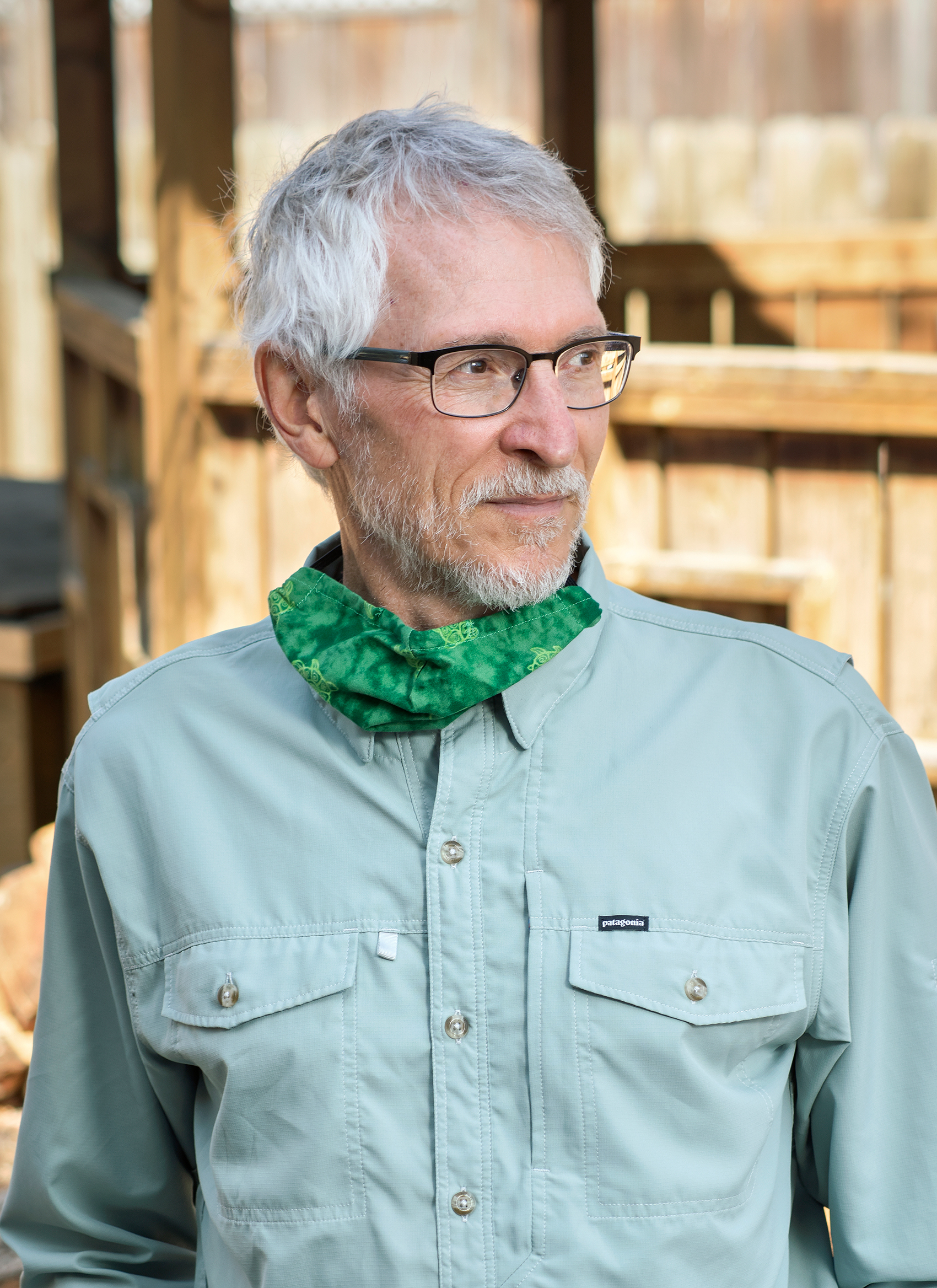
David Sauchyn, a professor in the Department of Geography and Environmental Studies and the director of the Prairie Adaptation Research Collaborative, was one of the lecturers in the Academics for Climate Community Lecture Series. (Photo by Trevor Hopkin)
Studies show that people who believe fake news don’t think that much about what they see or hear. With regards to accepting the science related to climate change, there is evidence that people can change their minds, although such changes are usually gradual.
“These people are smart, but they are influenced by their ideological bent, and their intelligence makes them better at convincing themselves that the things they see are true,” Pennycook said. “Interestingly, in other areas where we also rely on science to shape our ideas – such as nuclear power or genetically modified foods – we don’t see the same pattern.”
Gordon Pennycook, assistant professor of behavioural science in the Faculty of Business Administration, studies how people approach the topic of climate change. (Photo by Trevor Hopkin)
In the ensuing question and answer session, Pennycook shared research about how people handle information, including misinformation. Studies show that people who believe fake news don’t think that much about what they see or hear. With regards to accepting the science related to climate change, there is evidence that people can change their minds, although such changes are usually gradual. Pennycook is grateful that movements such as the Global Climate Strike have encouraged people to join the conversation and have helped to normalize the issue. It will take persistent efforts to make the big changes required, he concluded.
Climate change, she explained, is the breaking of the natural law, or pâstâhowin in Cree, the concept that humans are exploiting the land, water, and animals, rather than living in relationship with them.
Michelle Brass CICA’02, BAJ’02(Hons), a member of the steering committee for the group Indigenous Climate Action, agrees that changes are coming. Brass titled her March 2 presentation Indigenous Climate Action: why land-based, Indigenous-led responses are crucial to addressing the impacts of climate change.
Climate change, she explained, is the breaking of the natural law, or pâstâhowin in Cree, the concept that humans are exploiting the land, water, and animals, rather than living in relationship with them. “Being able to adapt to our natural environment has been embedded in our teachings,” she says. “We are also taught to always think about future generations when making decisions.”
Michelle Brass CICA’02, BAJ’02(Hons), a member of the steering committee for the group Indigenous Climate Action, says that climate change is the breaking of the natural law, or pâstâhowin in Cree, the concept that humans are exploiting the land, water and animals, rather than living in relationship with them. (Photo by Don Hall)
Brass says finding solutions to the problems posed by climate change will require a shift in mindset, what she refers to as “Indigenuity,” a new way of approaching those problems by applying Indigenous stories and teachings. The solutions, she explains, are rooted in the land and the ecosystems, and each area or region has its own balance. This will require us to respect and restore ecosystems where possible and do a better job of protecting biodiversity. We will also need courage to face the changes ahead, she added.
“Those five pathways range from a completely sustainable future to one that continues to rely heavily on fossil fuels. Those can provide us with a lot of information, but they are only illustrations to help people get their minds around the subject.”
“We don’t know what our world will look like, but I think we place too much emphasis on what we might lose, and too little on what we stand to gain. There are opportunities for us to rebuild kinship systems and community; after all, we were all land-based people in the past,” she noted.
Margot Hurlbert BAdmin’87 is a professor in the Johnson-Shoyama Graduate School of Public Policy and Canada Research Chair in Climate Change, Energy and Sustainability Policy. She was the coordinating lead author for a chapter on land and climate in a special report by the Intergovernmental Panel on Climate Change (IPCC), released in 2019.
Using the data from the IPCC report, and applying it with a global and regional perspective, Hurlbert asked her audience to consider five climate change scenarios in her February 13 presentation "Climate Change: Where are we and What Might the Future Bring? Scenarios and Pathways."
“With the information we have from the social sciences and from economics, we can suggest future human pathways of what life might look like,” Hurlbert said. “Those five pathways range from a completely sustainable future to one that continues to rely heavily on fossil fuels. Those can provide us with a lot of information, but they are only illustrations to help people get their minds around the subject.”
The pathways, Hurlbert added, also challenge people to think about the degree of change they can imagine by asking questions about power production, the nature of clean technology, and how we will sustain our economy, infrastructure and communities. There will be difficult trade-offs, she notes; for example, in how land is used.

Margot Hurlbert BAdmin’87 is a professor in the University’s Johnson-Shoyama Graduate School of Public Policy and Canada Research Chair in Climate Change, Energy and Sustainability Policy. She was the coordinating lead author for a chapter on land and climate in a special report by the Intergovernmental Panel on Climate Change (IPCC), released in 2019. (Photo by Trevor Hopkin)
“We like forests because they absorb carbon and sequester it, but when we cut down forests to grow crops to feed the world, we regard that as also a good thing,” explained Hurlbert. “We also know that Saskatchewan farmers are good at managing crop rotations, which can be huge in sequestering carbon and nitrogen (two important greenhouse gases) in the soil. This is one way agriculture can help reduce the use of nitrogen fertilizer on crops.”
Climate disscussions have raged on for years as this 2014 photo attests. Parents carry children among thousands marching through central Oslo, Norway, to support action on global climate change. According to organizers of "The People's Climate March," the Oslo demonstration was one of 2,808 solidarity events in 166 countries.
(Photo by iStock)
At the time of writing, the series is on hold due to the COVID-19 pandemic, but all those involved are optimistic that the Academics for Climate Change Lecture Series will soon return and University of Regina researchers will continue to share the facts about climate change with Prairie audiences.
The videos can be found on YouTube by searching for Academics for Climate - University of Regina. For more information visit the Academics for Climate Community – Regina Chapter Facebook page.
[post_title] => There is no Planet “B”
[post_excerpt] => A November 2018 Angus Reid national survey found that almost 20 per cent of Saskatchewan residents (second only to Alberta) don’t subscribe to human-caused global warming. The same survey indicated that Canadians do, however, look to university scientists to provide accurate information on climate change. So, this past January, a group of University of Regina researchers embarked on a series of public lectures that looked at climate change from a variety of perspectives – providing Prairie detractors with a combination of science-based evidence and Indigenous
[post_status] => publish
[comment_status] => open
[ping_status] => open
[post_password] =>
[post_name] => there-is-no-planet-b
[to_ping] =>
[pinged] =>
[post_modified] => 2020-07-06 11:12:12
[post_modified_gmt] => 2020-07-06 17:12:12
[post_content_filtered] =>
[post_parent] => 0
[guid] => https://www.degreesmagazine.ca/?p=4047
[menu_order] => 0
[post_type] => post
[post_mime_type] =>
[comment_count] => 0
[filter] => raw
)
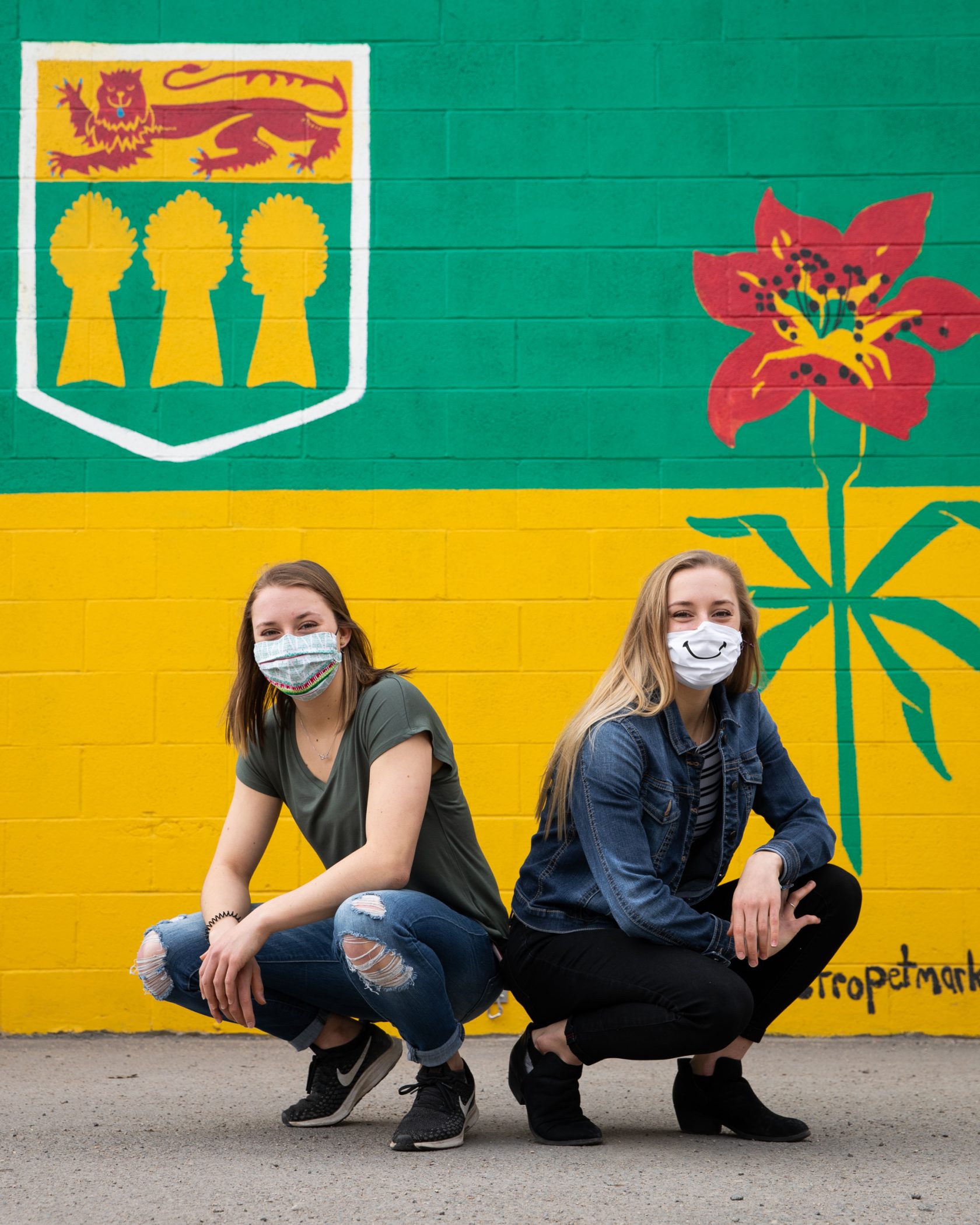



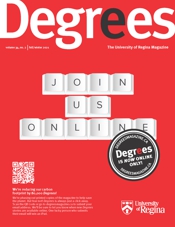

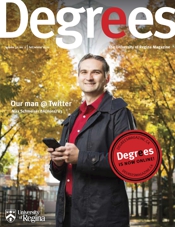
 Canadian author and geographer Lenore Newman suggests that Canadian food is that which grows wild in Canada, and which Canadians particularly enjoy, including salmon, fiddleheads, berries, and maple syrup. Donica Belisle suggests Canadian food is colonial food.
Canadian author and geographer Lenore Newman suggests that Canadian food is that which grows wild in Canada, and which Canadians particularly enjoy, including salmon, fiddleheads, berries, and maple syrup. Donica Belisle suggests Canadian food is colonial food.
 Donica Belisle is currently is currently writing a book on the history of Canadian sugar.
Donica Belisle is currently is currently writing a book on the history of Canadian sugar.
 People with COVID-19 masks gather at a traditional Turkish grocery bazaar in Eskisehir, Turkey. (Photo by iStock)
People with COVID-19 masks gather at a traditional Turkish grocery bazaar in Eskisehir, Turkey. (Photo by iStock)
 Sarah Abbott, an associate professor in the Department of Film. (Photo by Trevor Hopkin)
Sarah Abbott, an associate professor in the Department of Film. (Photo by Trevor Hopkin)
 Britt Hall, a professor in the Department of Biology. (Photo by Trevor Hopkin)
Britt Hall, a professor in the Department of Biology. (Photo by Trevor Hopkin)
 Sean Tucker, an associate professor of Business Administration. (Photo by Trevor Hopkin)
Sean Tucker, an associate professor of Business Administration. (Photo by Trevor Hopkin)
 David Sauchyn, a professor in the Department of Geography and Environmental Studies and the director of the Prairie Adaptation Research Collaborative, was one of the lecturers in the Academics for Climate Community Lecture Series. (Photo by Trevor Hopkin)
David Sauchyn, a professor in the Department of Geography and Environmental Studies and the director of the Prairie Adaptation Research Collaborative, was one of the lecturers in the Academics for Climate Community Lecture Series. (Photo by Trevor Hopkin)
 Margot Hurlbert BAdmin’87 is a professor in the University’s Johnson-Shoyama Graduate School of Public Policy and Canada Research Chair in Climate Change, Energy and Sustainability Policy. She was the coordinating lead author for a chapter on land and climate in a special report by the Intergovernmental Panel on Climate Change (IPCC), released in 2019. (Photo by Trevor Hopkin)
Margot Hurlbert BAdmin’87 is a professor in the University’s Johnson-Shoyama Graduate School of Public Policy and Canada Research Chair in Climate Change, Energy and Sustainability Policy. She was the coordinating lead author for a chapter on land and climate in a special report by the Intergovernmental Panel on Climate Change (IPCC), released in 2019. (Photo by Trevor Hopkin)